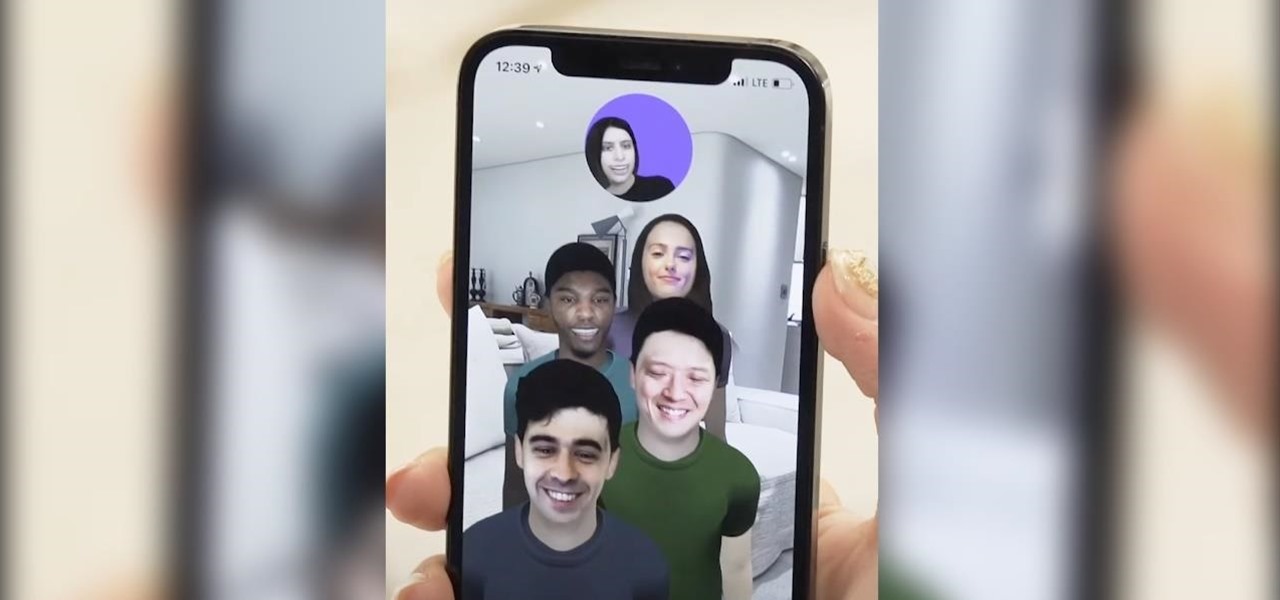The team over at Spatial isn't done innovating its way through augmented reality in 2020.
Just days after adding a mobile option to its groundbreaking Spatial virtual collaboration product, the company is releasing Tele, a new app geared toward more casual, AR-powered video chats.
• Don't Miss: Next Reality's 30 People to Watch in Augmented Reality for 2020
The Tele app uses the same easy avatar creation process as Spatial, which can take an existing face photo on your phone and wrap it around an avatar. Alternatively, you can simply snap a selfie and use that photo for your avatar.
Once the creation process is done (it takes about a minute to process), and you anchor it to your face using the app's targeting frame, you suddenly have an avatar with a body (waist up only) that includes a moving mouth that corresponds to the audio coming from your side of the phone.


The effect is perfect for friends who want to feel as though they're video chatting with each other in one another's home. Of course, with the rise in video chat, some might wonder what the use case is for this app. From my vantage point, it's simple: video chat fatigue. It's one thing to hold an occasional video chat for a big meeting, but in 2020, many of us have learned what it is to have video meeting fatigue.
Setting your computer at the right angle, fixing your hair and/or makeup, making sure the lighting is right... nowadays a video chat (if you're doing it right) is like a mini TV production. That can become tiring after a while, especially if the virtual meeting isn't business and is just a casual chat when you'd rather not set up your mini studio. With Tele, you get the benefit of seeing someone's "face" while also engaging with them in AR in a real environment. Think of it as a baby step toward those kinds of science fiction holographic messages and conversations you've seen in movies like Star Wars.
My only gripe so far is how the app forces you to allow access to your contacts. This is a pet peeve of mine, especially with new apps and companies that are still establishing a track record of being able to be trusted with your data. In Spatial's case, because I'm familiar with the team, I'm fairly comfortable allowing access to my smartphone's contacts, but an opt-in option would have been much better. As it stands, if you don't allow access to your contacts, you simply can't use the app. (I realize this has been the trend with new apps for years and has become a common practice, but I still don't like it.)
But back to why I love this app. On a purely strategic level, what Spatial is doing here is incredibly smart. The primary Spatial app is clearly geared toward business customers, but why let all that development work be used "only" for business users. Tele allows casual social media users to participate in a slice of Spatial's AR development with zero learning curve in terms of using the app.
Breaking this casual, more social aspect of the company's work into a separate app was very, very smart. We're currently seeing how not nailing your audience can hinder a growing app or social network. While LinkedIn is laser-focused on business users, Twitter is all over the map with casual, social, and, increasingly, politically-minded users, so it's becoming difficult to understand exactly who Twitter's core audience is, and, as a result, which audience Twitter should work to serve.
Speaking of Twitter, the company just started testing its audio chat feature called Twitter Spaces, which seems like a clone of the popular Clubhouse app. This is just months after Twitter launched a radio-style feature that doesn't seem to be getting much use, a Stories feature (aka Fleets), which is really just a tag-along on the heels of similar features from Snapchat and Instagram, and years after the company unwisely shuttered Vine (what could be considered TikTok before TikTok). Lack of user focus hasn't worked well for Twitter.
On the other hand, early on, the new Clubhouse audio chat app has thrived as an invite-only community focused on business. But as the community has slowly opened up and the invites are now easier to come by, a lot of the conversation on Clubhouse has moved to dating and entertainment rumors, a shift that already has some users wondering if the app will be around for the long haul, especially now that Twitter Spaces is coming. The point here is that focus can make or break a great app. In Spatial's case, the launch of Tele tells me that the company's co-founders Anand Agarawala and Jinha Lee understand that biting the bullet early and keeping an app focused and targeted — Spatial for business, Tele for fun — is the smarter path.
I haven't tried to push the Tele app to its limits, but so far, it looks like you can video chat with up to four friends in AR, with their bodies hovering in your real space. You also have the option of just interacting with your friend's avatars against a flat, colored background if seeing them in AR is a little too immersive for your tastes. It's a slick solution that's tailor-made for the challenges social distancing have presented the world in 2020.
Finally, those of you with Android phones should know that this free app is only available for the iPhone (for now), requires iOS 13, and is compatible with iPhone 6s and later as well as most recent versions of the iPad.
Just updated your iPhone? You'll find new features for Podcasts, News, Books, and TV, as well as important security improvements and fresh wallpapers. Find out what's new and changed on your iPhone with the iOS 17.5 update.






















Be the First to Comment
Share Your Thoughts